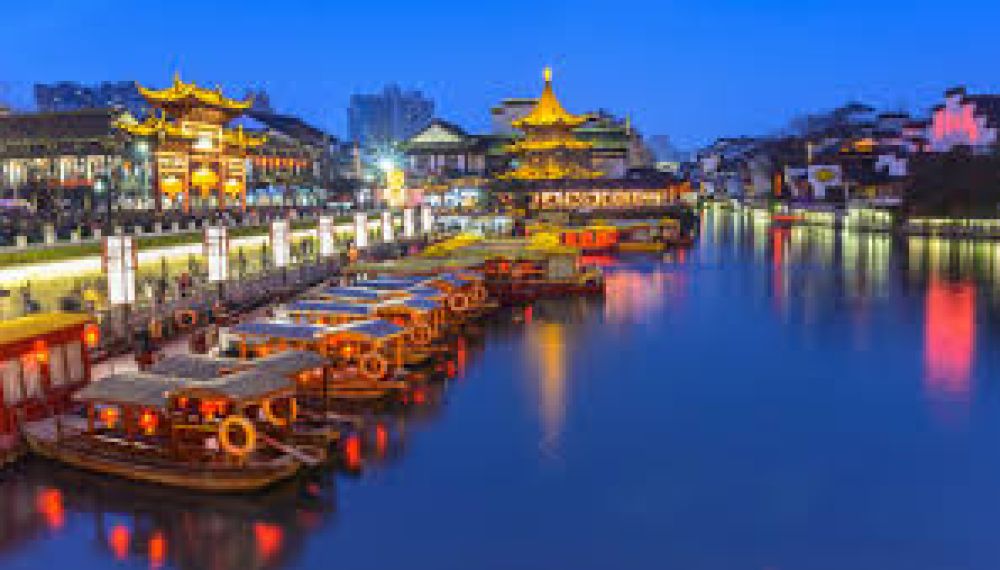

Nestled in the bustling city of Nanjing, the Qinhuai River has been a beacon of culture, economy, and tourism for centuries. Historically, it served as a major trade route, connecting the rich southern provinces of China to the northern areas. The river thrived during the Six Dynasties period, with numerous poets and scholars drawing inspiration from its tranquil waters.
The history of tourism along the Qinhuai River can be traced back to the Ming Dynasty (1368-1644). It was during this era that the river's surroundings flourished as a commercial district, with shops, restaurants, and entertainment venues catering to both locals and travelers. The famed Confucius Temple area, also known as Fuzimiao, became a cultural hub, with many scholars visiting to pay respects and gain wisdom.
In modern times, particularly in the late 20th century, the Qinhuai River underwent significant restoration and revitalization efforts aimed at preserving its historic landscape and promoting tourism. These efforts included the refurbishment of ancient buildings, the introduction of traditional-style boats for river cruises, and the installation of atmospheric lighting to enhance its nighttime charm.
Today, the Qinhuai River area is a testament to the rich cultural tapestry of Nanjing. It is famous for its well-preserved historic sites, bustling bazaars, and an array of traditional Chinese crafts and foods. Traditional boat tours have become an iconic activity for visitors, offering a serene experience coupled with picturesque views of the riverbanks lined with classical Chinese architecture.
Major cultural events, such as the Qinhuai International Lantern Festival, held annually during the Lunar New Year period, bring an influx of tourists seeking to experience the vibrant festivities. The festival features elaborate lantern displays, folk performances, and traditional crafts, showcasing Nanjing's cultural heritage and enhancing its appeal as a tourist destination.
As tourism trends evolve, the Qinhuai River continues to innovate while preserving its historic essence. The introduction of eco-friendly electric boats is a nod to sustainable tourism practices. The region is also seeing a growing interest in cultural and historical tourism, with visitors from all over the world coming to explore the ancient stories etched along the banks of this storied river.
Embracing both its past and future, the Qinhuai River remains a jewel in Nanjing's touristic landscape, offering an experience that is both enlightening and enchanting for those who wander along its meandering path.